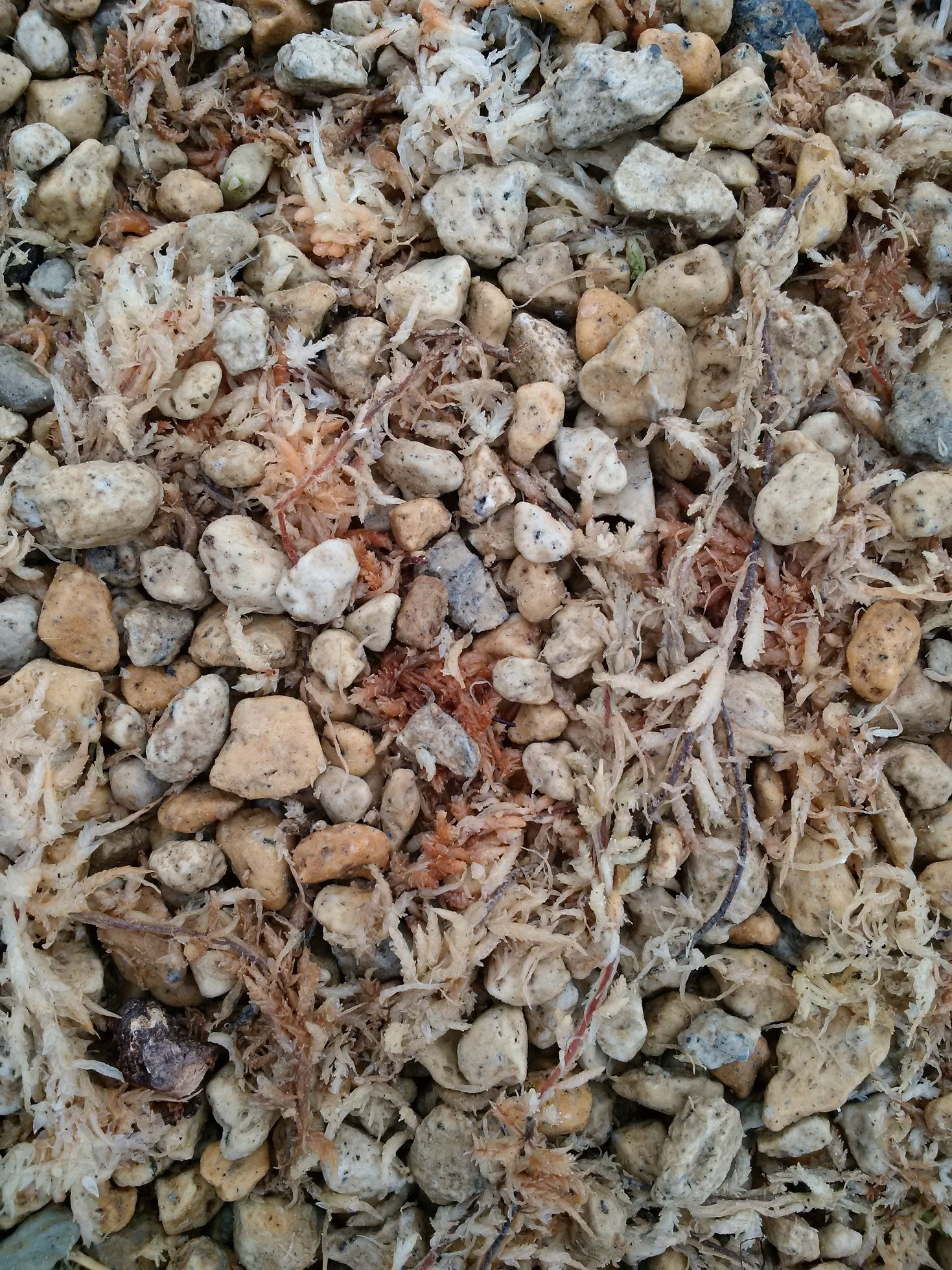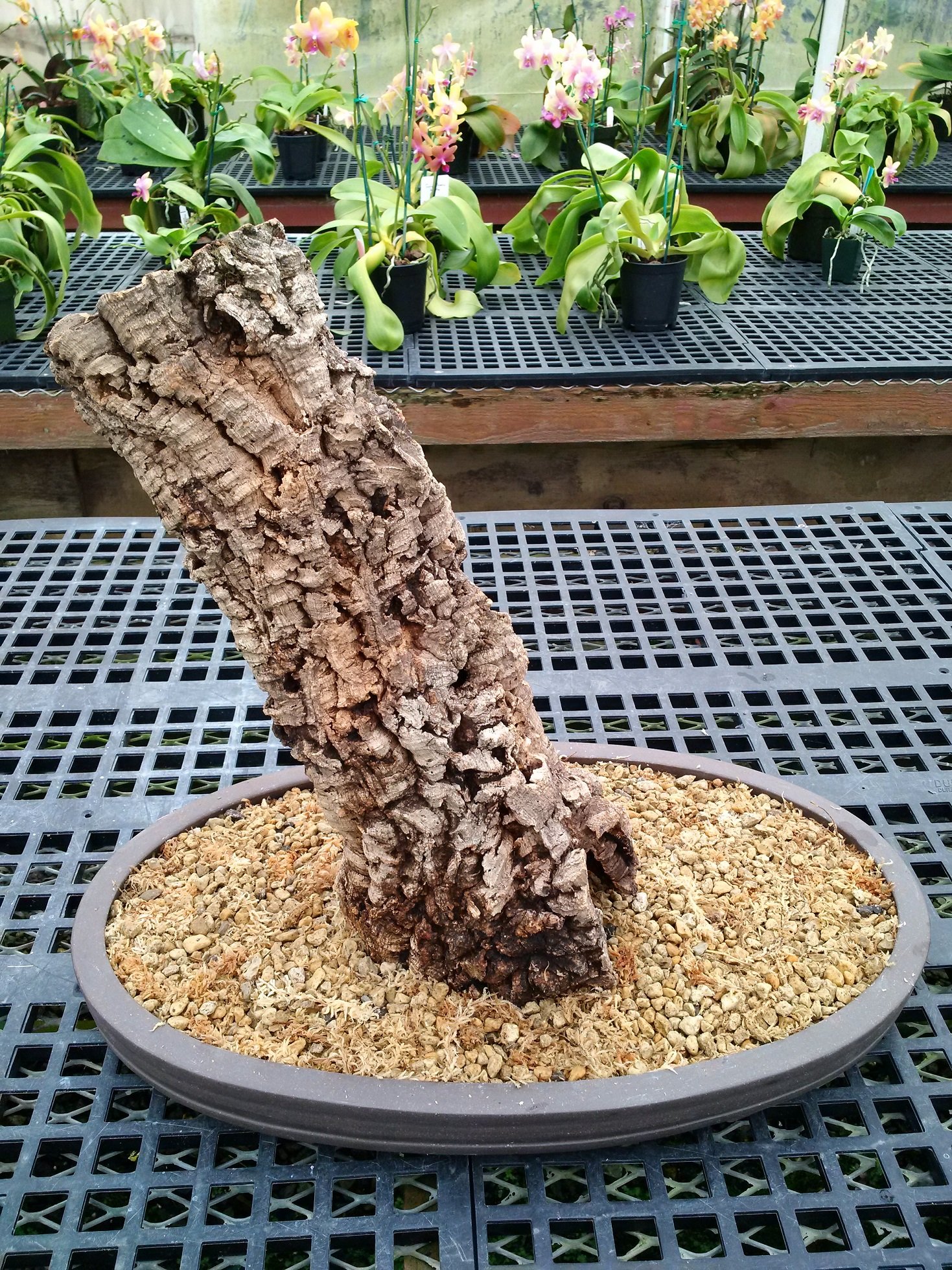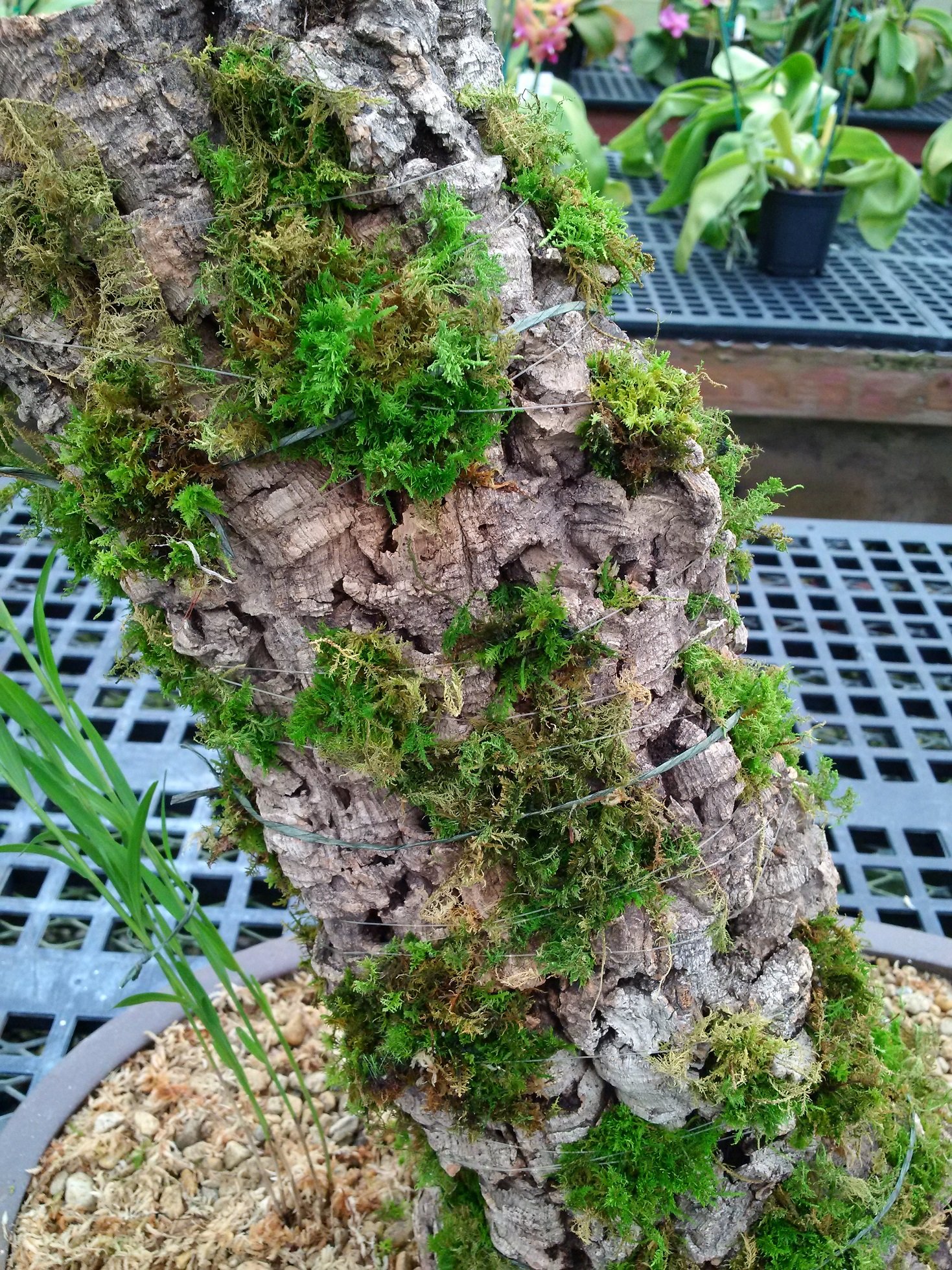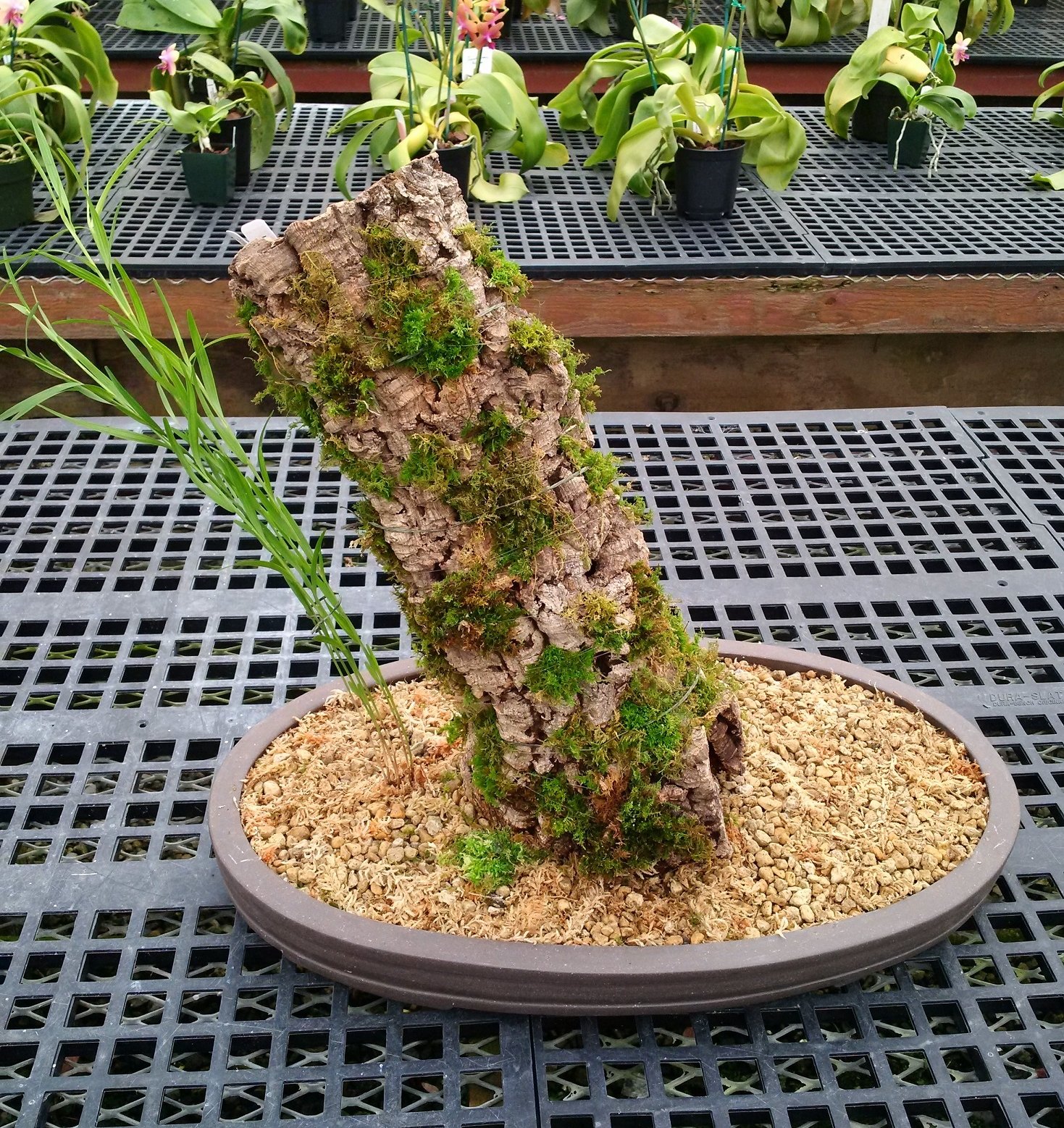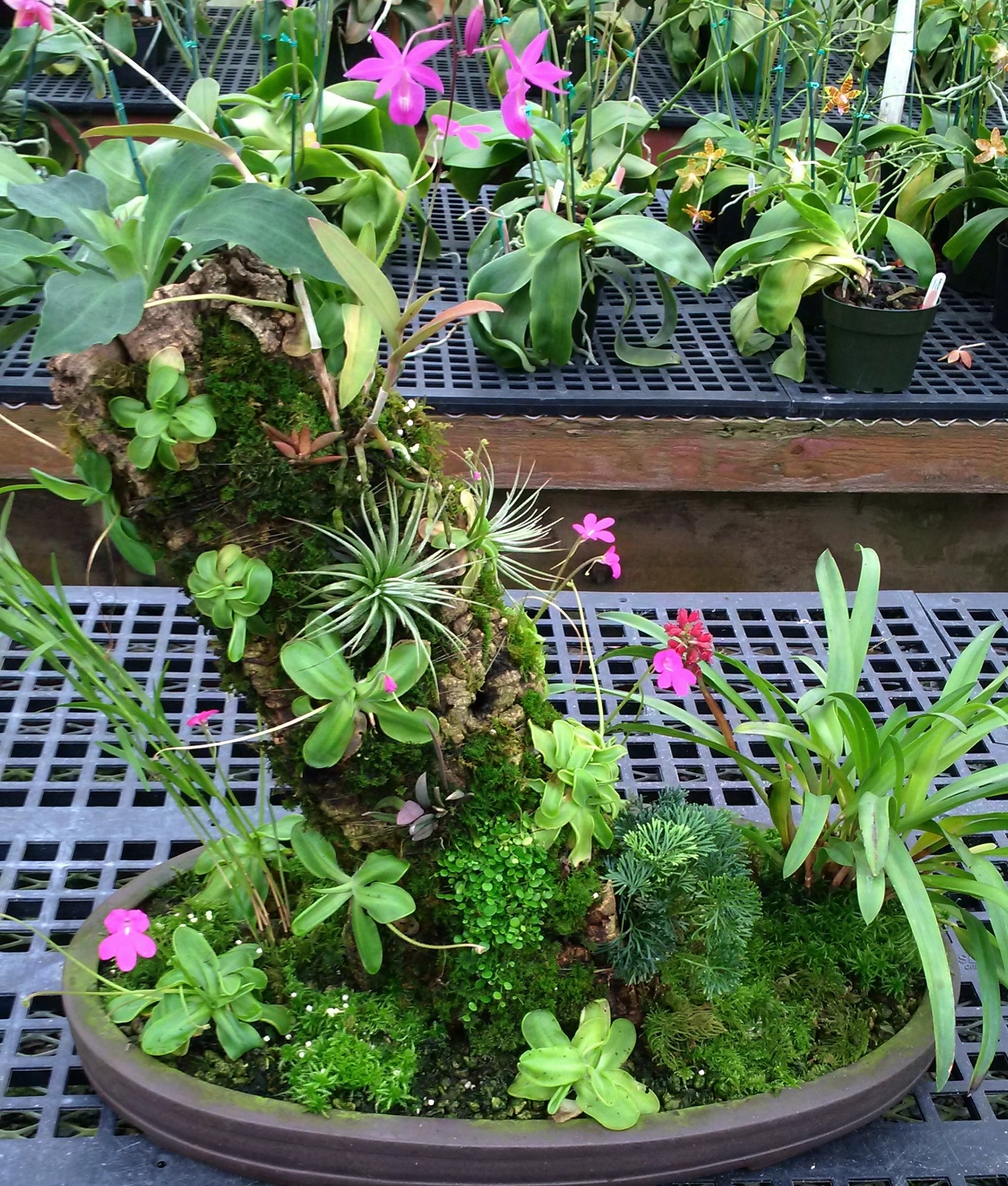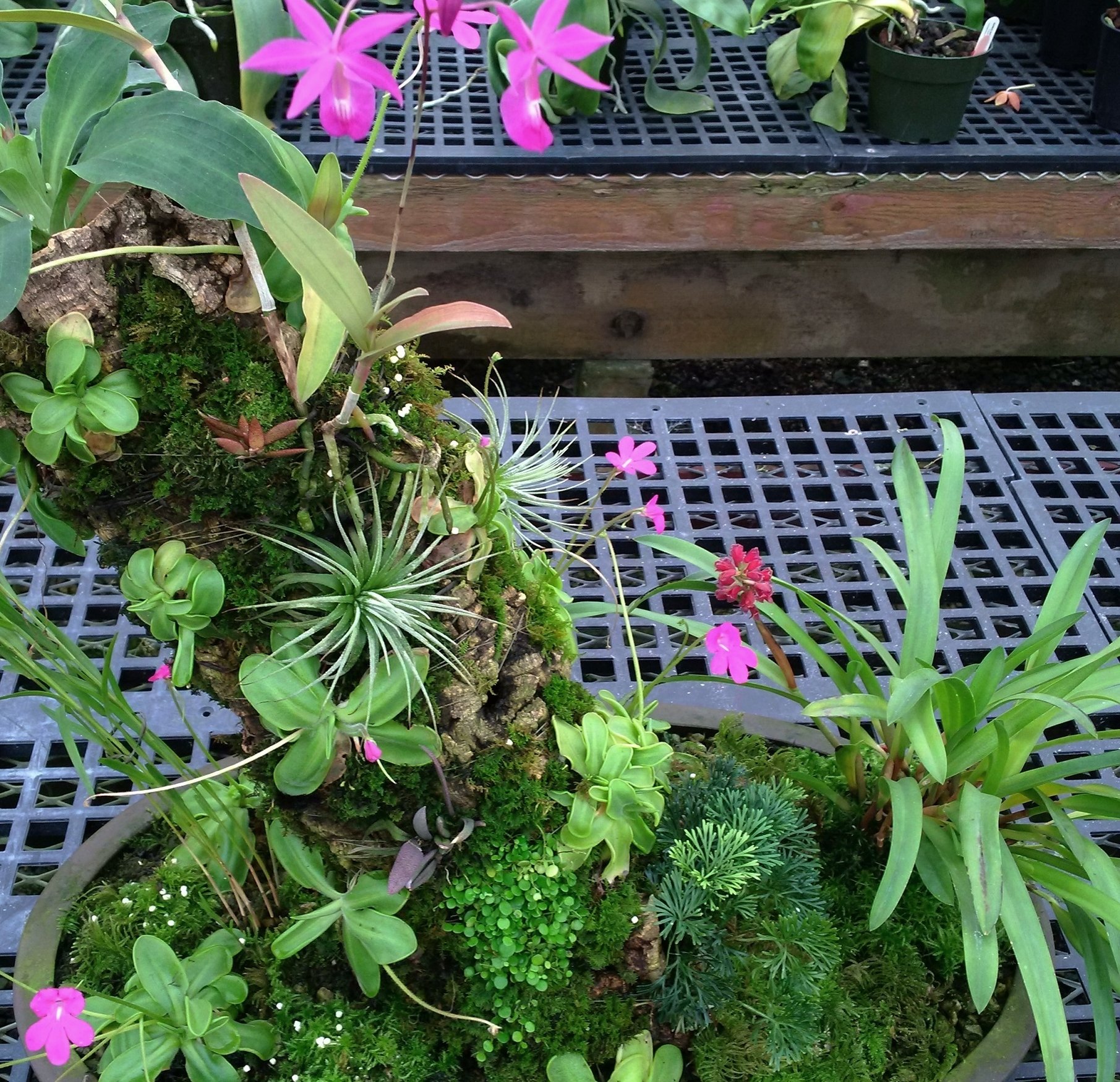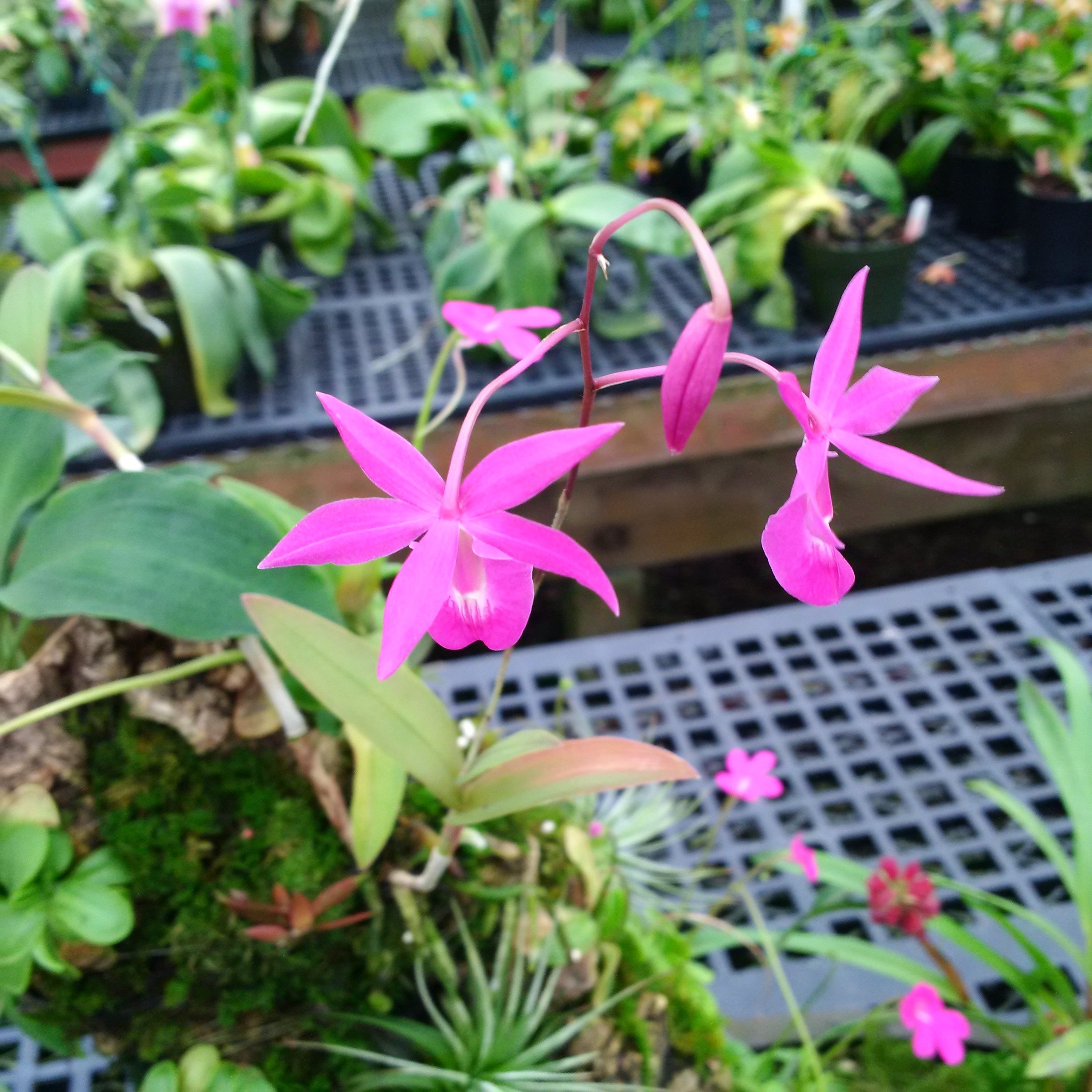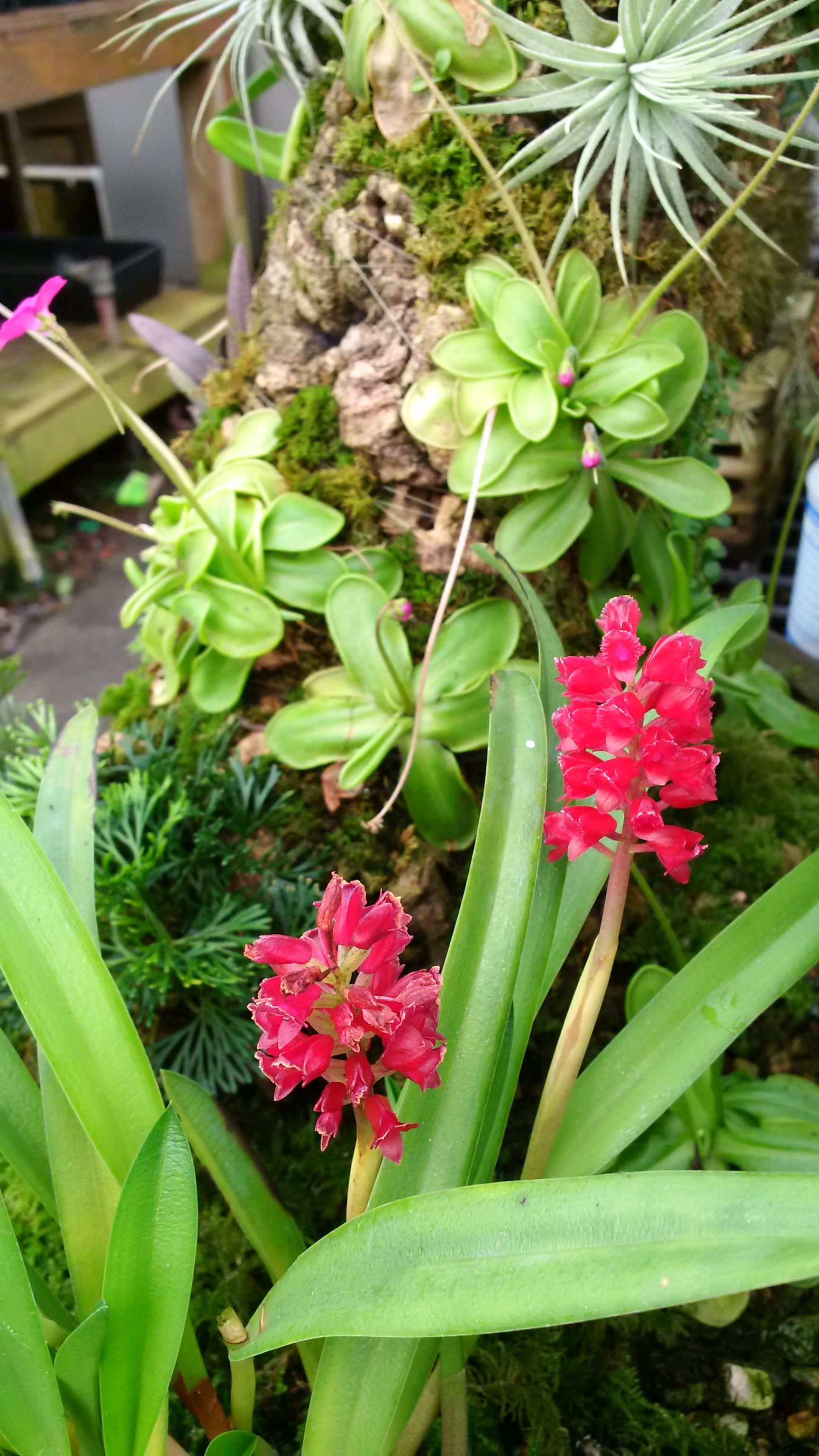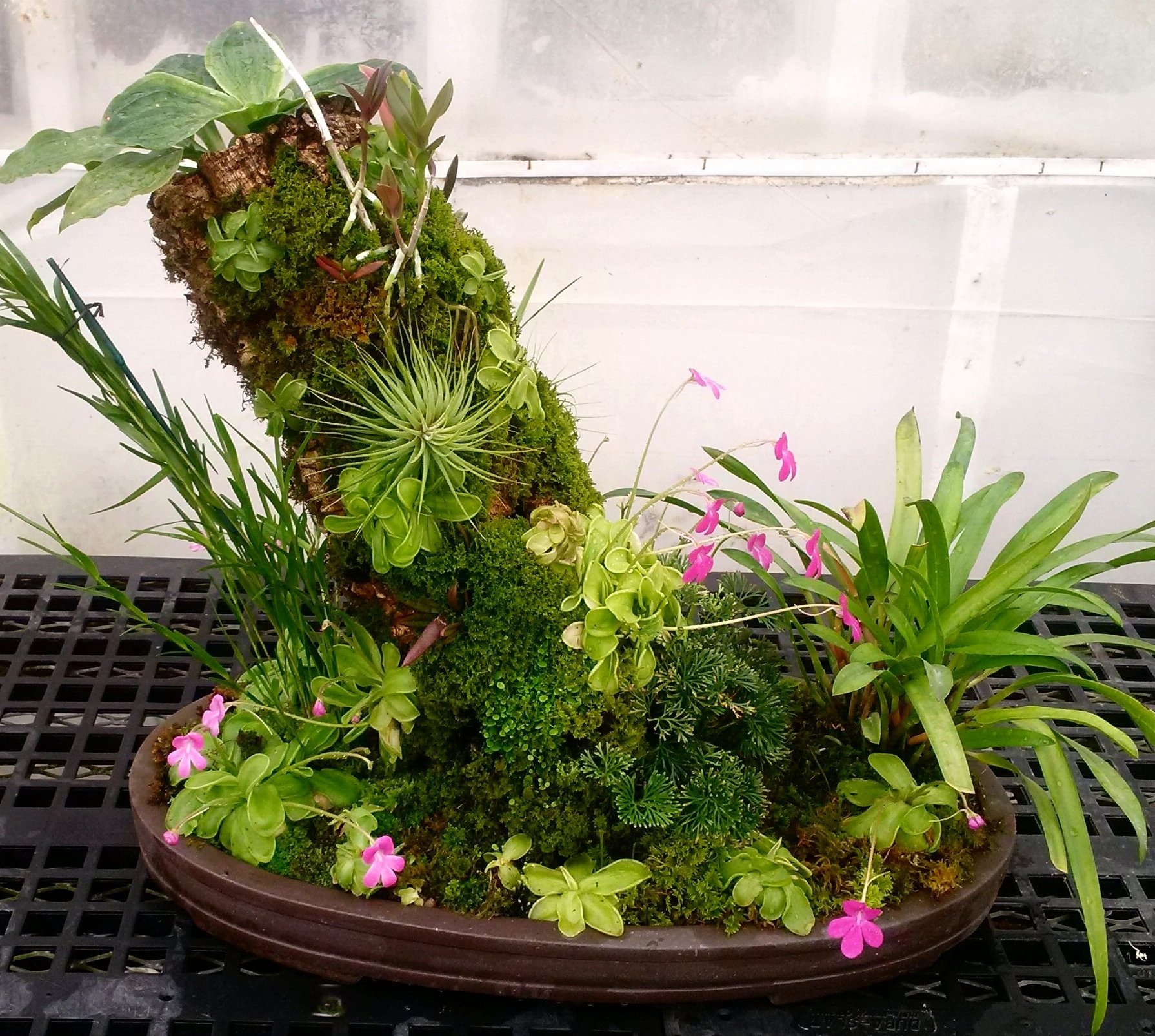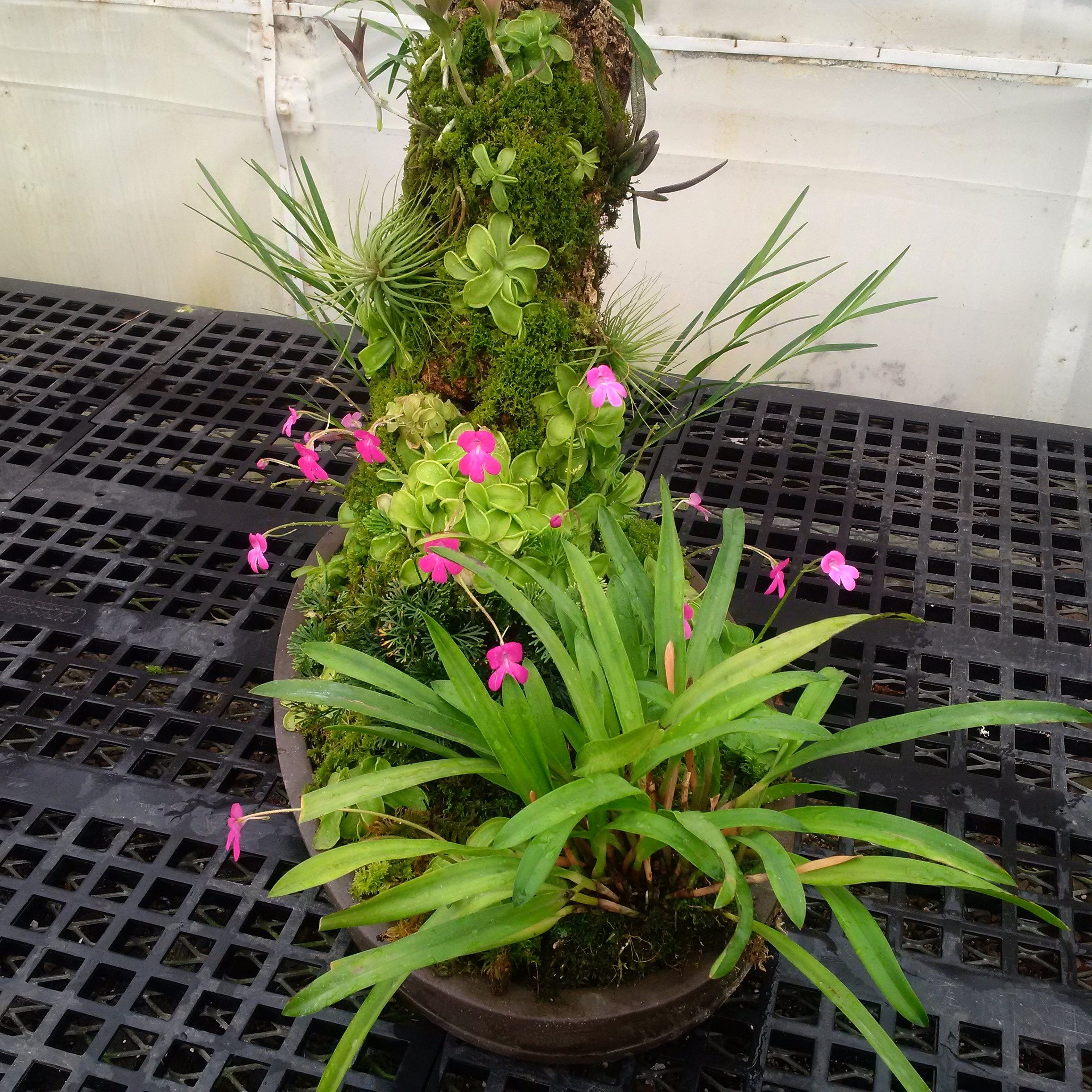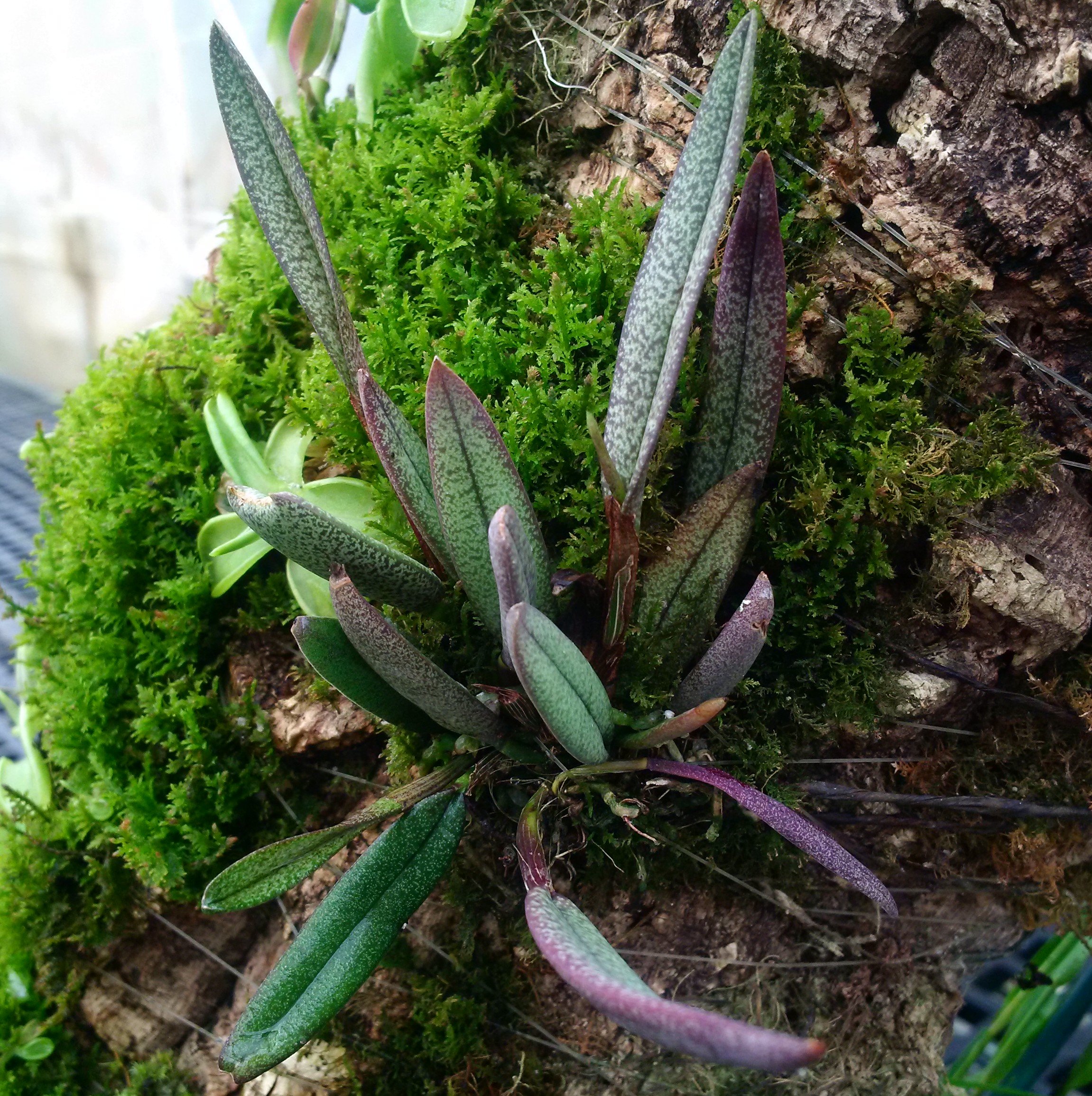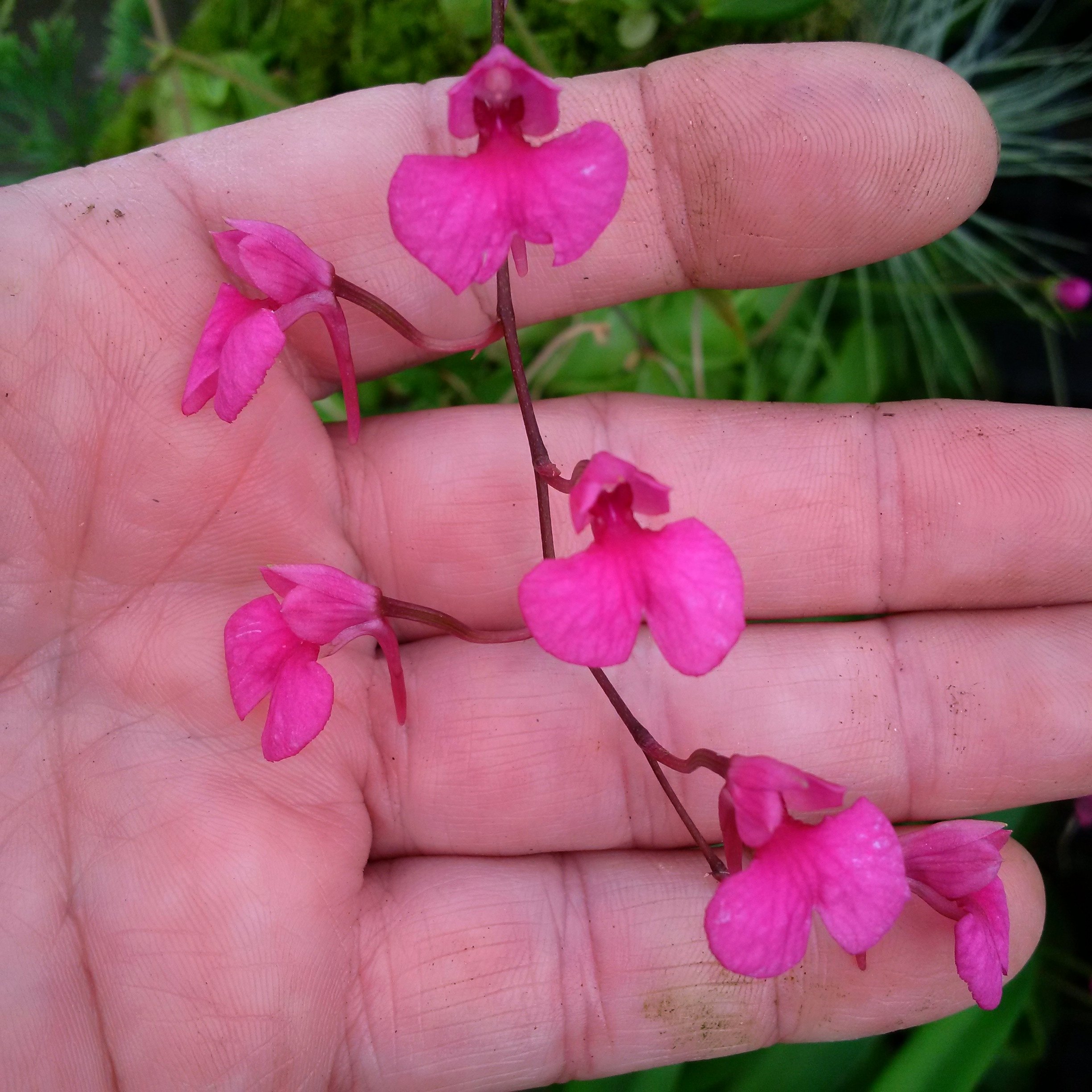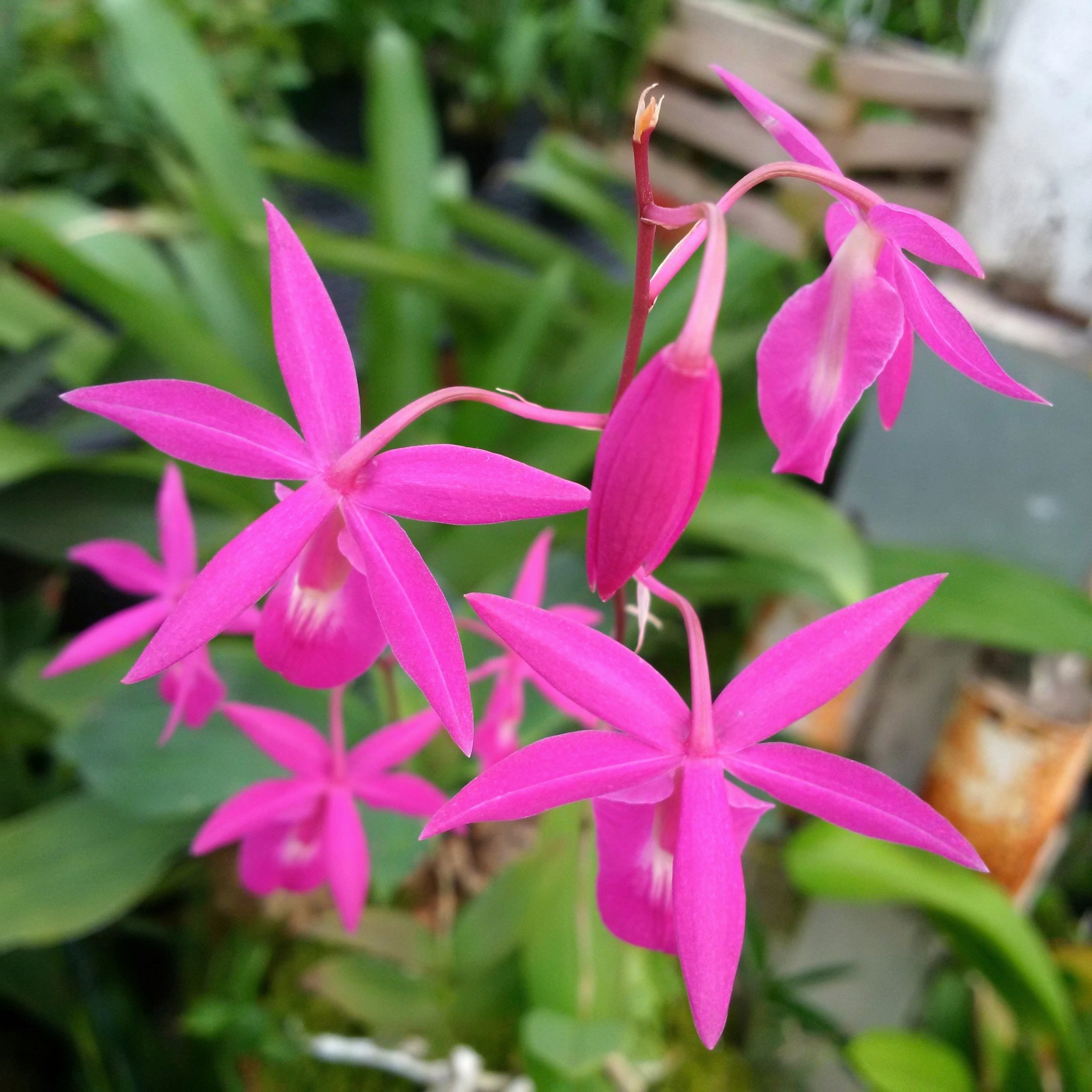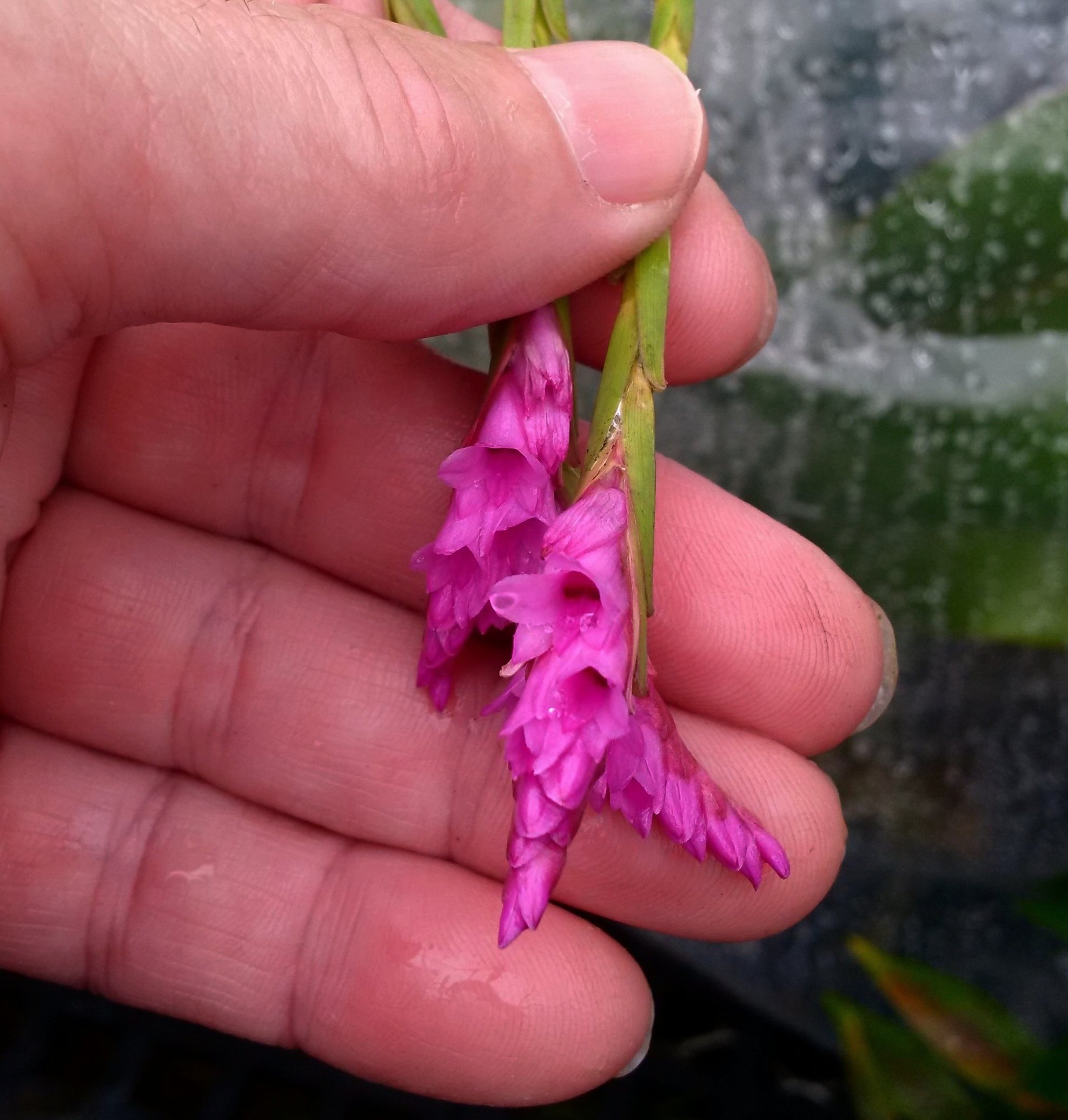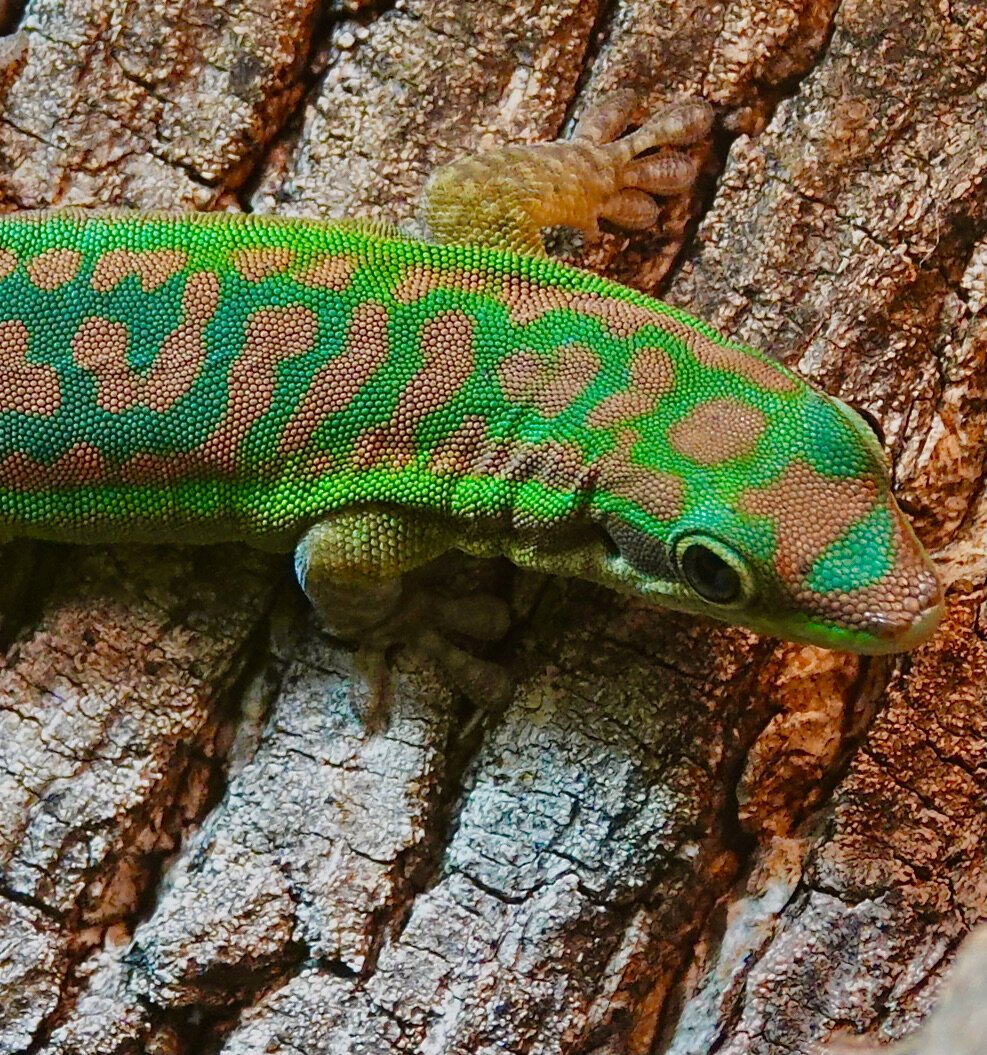Central American Cloud Forest "Bonsai Diorama" - A Visual Build Tutorial
by Jay Vannini
During the summer of 2016, I decided to finally indulge a whim that I had been mulling for some time. I wanted to expand on a design concept that I had already utilized in my different Neotropical treefrog vivaria, where I had incorporated suitable indigenous plants exclusively to decorate the tanks. American herpetoculture, both in zoos and private collections, lagged that of the EU (especially the Germans) in many ways until about a decade or so ago, and the use of detail-oriented, planted vivaria/paludaria design was one of those ways. European collectors trail-blazed the discipline of matching region-specific plants and animals in their vivaria, a practice that is now gaining followers in the US and is a major driver for the commercial demand for rare/offbeat small tropical plants. I decided to work on a miniature diorama showing a stylized community of cloud forest plants from high elevation montane wet forests in the tri-border junction of southeastern Guatemala, northwestern El Salvador and southwestern Honduras (what is locally known as El Trifinio).
Select, seed-grown Honduran-origin Pinguicula mesophytica flowering in early July.
Prompting me in this direction was the fact that I already had a large number of mature, seed-grown examples of the rare northern Central American epiphytic cloud forest butterwort, Pinguicula mesophytica that I could use as a visual anchor for the project. Fortuitously, I also had a number of associated red and purple-flowered miniature or relatively small orchid species, as well as ferns and mosses that occur together in habitat with this very showy-flowered carnivorous plant. I put together a small target list of additional plant species that seemed worth adding to the project that would be purchased at a later date, then sketch-padded a rough design.
The criteria for flowering plant inclusion was that they must be epiphytic, indigenous to this restricted region, that they had showy red, purple or pink (hummingbird-pollinated) flowers, and that their mature size was congruent with the diorama's projected scale.
Basic components for the build that had to be purchased by me included an suitable display pot, a large, selected virgin cork round, a roll of anodized heavy gauge bonsai wire, a couple of small patches of shade cloth to cover the pot's drainage holes and a small bag of medium-grade Japanese pumice (hyuga). All of the other pieces were at hand, other than a few plants that were ordered from different US specialty orchid nurseries.
Given that I envisioned a diorama that could be shown on a center table at home or at plant shows, I opted for a large, oval Yixing purple clay bonsai pot measuring 24"x14"x2.5"/60x35x6 cm as the foundation. While a bit heavy these pots are quite robust and, for me, fairly easy to carry when planted. Since I wanted to be able to plant the ground areas of the pot, I chose to tightly wire the round through the drainage holes and anchor it that way, rather than using small job, quick-setting concrete to bind the mount to the pot.
Once that was done, I glued the two squares of shade cloth over the drainage holes to prevent the pumice mix from falling through. Start date for the construction was July 31, 2016.
This build was done entirely by me at Golden Gate Orchids, a commercial greenhouse facility in South San Francisco, California.
Next, a 4:1 ratio of Japanese pumice and New Zealand long-fibered sphagnum moss (previously steam sterilized) was used to fill the pot to just below the inner rim.
A 4"/10 cm start plug of the orchid, Isochilus major, was planted, and some patches of the hardy cosmopolitan, cool-growing moss, Thudium sp., were tied to the cork round with fish line.
A 4"/10 cm start of the ubiquitous Neotropical cloud forest epiphytic fern, Elaphoglossum peltatum, was unpotted and prepped for planting.
In quick succession, I planted the fern colony in a hole at the base of the cork round, a pair of atmospheric bromeliads, Tillandsia magnusiana, the orchids Stenorrhynchos glicenstenii, Nagaliella purpurea and Barkeria skinneri, as well as Peperomia emarginata, in addition to the first group of cherry-picked epiphytic butterworts.
Shown at a later date, a small division of the orchid, Arpophyllum alpinum, has been added. This beautifully-flowered species can occur at some of the highest elevations of any orchid species in northern Central America and southeastern México. At a later date still, ostrich plume moss, Ptilium crista-castrensis and more Sphagnum sp. has been added, and a few things are blooming. All good, thus far.
Images of the Barkeria and Arpophyllum making a yeoman's effort to bloom in sequence through October 2016.
A tiny example of the micro-miniature regional orchid, Macroclinium cf. bicolor, is transplanted from a twig to the mount.
A year after being started, the diorama begins to show its promise as a novelty exotic pot planting in mid-July 2017.
A regionally abundant but pretty near ever-blooming miniature orchid, Nagaliella purpurea, well-established and beginning to flower shown left), as well as a challenging but very beautiful miniature orchid, Comparettia falcata (shown right), in full flower on the mount. Note the amazing convergence between these flowers and those of Pinguicula mesophytica.
Second flowering of the Barkeria in and first on the Isochilus in September 2017.
December 2017, a damp, gloomy afternoon at the beginning of the northern hemisphere winter and the mount looks quite natural and much older than it is (~18 months here).
January 2018, Stenorrhynchos glicensteinii, second flowering. Inflorescence shown is ~12"/30 cm tall and and looking splendid after the holidays.
July 20, 2018. Fat and sassy on its perch on a greenhouse bench the morning prior to subsequent public debut (shown in final image) as a display at "Orchids in the Park", a mid-summer San Francisco Orchid Society show.
A plant list is provided below for informative purposes. FWIW, I am considering swapping out the reedy Isochilus major for a more upright and compact Oerstedella mystacidium that I have on hand in the near future to visually tighten up the left side of the diorama. A couple regionally endemic, reddish-flowered Lepanthes spp. would be nice additions but are very challenging to (legally) acquire outside of origin.
Non orchids:
Pinguicula mesophytica
Tillandsia magnusiana
Peperomia emarginella
Elaphoglossum peltatum
Selaginella sp.
Thudium sp.
Ptilium crista-galli
Sphagnum sp.
Orchids:
Arpophyllum alpinum 'Golden Gate'
Barkeria lindleyana
Macroclinium cf. bicolor
Isochilus major
Stenorrhynchos glicensteinii
Comparettia falcata
Nagaliella purpurea
This type of diorama model has a lot of potential for adoption by fern, moss and orchid growers. In particular, collectors of miniature pleurothallids and red-flowered dwarf cattleyas (formerly Sophronitis spp.), small-statured New Guinea and Malesian dendrobiums, as well as small tropical ferns and bryophytes can use a design similar to this to produce incredible living works of art.
All content ©Exotica Esoterica® 2018-2025 and ©Jay Vannini 2018
Follow us on:

